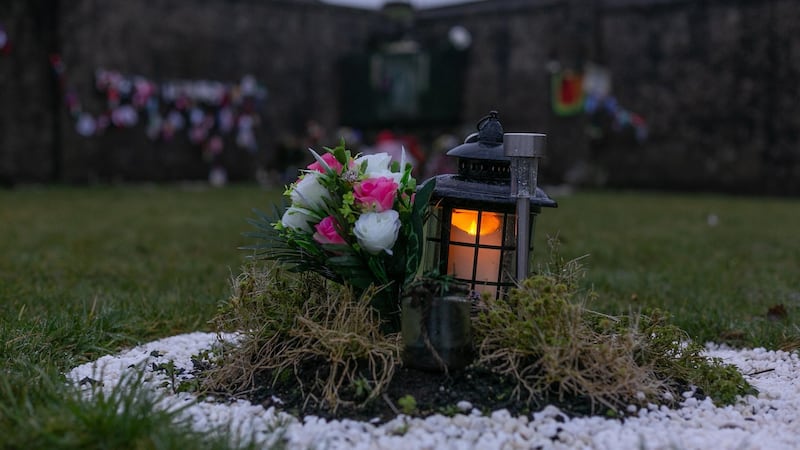Mary Lavin’s story Sarah, written in 1943, begins: “Sarah had a bit of a bad name.” It ends, a few laconic pages later, with Sarah in a ditch “dead as a rat” and “the child dead beside her!” It is, as one of the principal characters concludes, where “the likes of her belong”.
In 1966, Edna O’Brien said: “I don’t think I have any pleasure in any part of my body, because my first and initial body thoughts were blackened by the fear of sin: and therefore I think of my body as a sort of vehicle for sin.”
This culture of fear fused the physical and the spiritual, the social and the religious, into a single, overwhelming system of domination
Winter Nights
In 1969, Alan Bestic reported the words of a Catholic social worker in England about unmarried pregnant Irish girls: "The fear in these girls has to be seen to be believed. It is only by endless gentleness that we can persuade them that going back [to Ireland] to have their baby wouldn't be so awful. What sort of society do you have in Ireland that puts the girls into this state?"
The fear of sin, the fear of society, the fear of ending up dead in a ditch. Maybe it is too much to expect that an official report, however carefully constructed, could capture this reign of terror. But unless we acknowledge it, we cannot do justice to its survivors.
This culture of fear fused the physical and the spiritual, the social and the religious, into a single, overwhelming system of domination. Authority was so absolute because it operated seamlessly in the soul and in the world.
Coercion
The report struggles very badly with the idea of coercion. Consider these two sentences: “There is no evidence that women were forced to enter mother and baby homes by the church or State authorities. Most women had no alternative.”
What does that mean? If you have no alternative but to do something, are you not “forced” to do it?

The report finds that unmarried pregnant women were “forced to leave home” and many were “forced to give birth” in the county homes that were just workhouses by other names. But it still claims that they were not forced by church and State either to enter these places or to give up their babies for adoption.
The overwhelming reality of that world was that the church had the monopoly on damnation and salvation
How can we explain this contradiction? Only, I think, by the resort to very narrow and legalistic definitions. Since women were not physically arrested by gardaí and locked away in the homes, and since they were not (for the most part) physically made to sign adoption papers, they were, technically speaking, not coerced.
But coercion, as anyone familiar with domestic abuse can tell you, comes in many forms. And the most important one in the Ireland I grew up in was spiritual. That power, for the vast majority of us, was wielded by one institution and one institution only: the Catholic Church.
The overwhelming reality of that world was that the church had the monopoly on damnation and salvation. It is very hard for people born in a secular Ireland to understand what that meant.
Most people really believed in hell, in the devil and in sin. Even in 1981, when the domain of the mother and baby homes was receding, 54 per cent of Irish people still believed in hell (as against 23 per cent of Europeans); 57 per cent in Satan (against 25 per cent); and 85 per cent in sin (against 57 per cent). Ten years earlier, these figures would have been much higher.
Why did these abusive institutions survive so long? How could babies be buried without even the most basic recognition of their existence?
If you leave this out, it is very easy to blame, as the report broadly does, the treatment of unmarried mothers on the harshness of their families and on the fathers of their children.
It is indeed important to acknowledge the cruelty of Irish society, its obsessions with respectability and property, its misogyny and its snobbery, its endless capacity (honed by generations of mass emigration) to make its own realities disappear.
Spiritual terrorism
But the driving force of this cruelty was spiritual terrorism. The sum of all fears was the dread of perdition. It was within this orbit that, as O’Brien put it, the female body was “blackened by the fear of sin”.
There was no such thing as “society” as distinct from this dominion of damnation, no neutral State beyond its reach. It pervaded everything and invaded each of our bodies.
The brutal institutions of social control – industrial schools, Magdalene asylums, and mother and baby homes – were the outward signs of this inward terror. They expressed in bricks and mortar the malign bully that lived inside our souls.
It was the church that placed, and kept, it there. Why did these abusive institutions survive so long? How could babies be buried without even the most basic recognition of their existence? Because people were afraid of bishops and priests and nuns and the authority they held, not just over this life, but over the next.
Look up “coercive control” on the Garda website. It says it can be “hard to spot when in the relationship itself” and this “can stop victims from seeing the reality of their situation”. This is what happened with the church’s power and we will not be over it until we can see that reality clearly.













